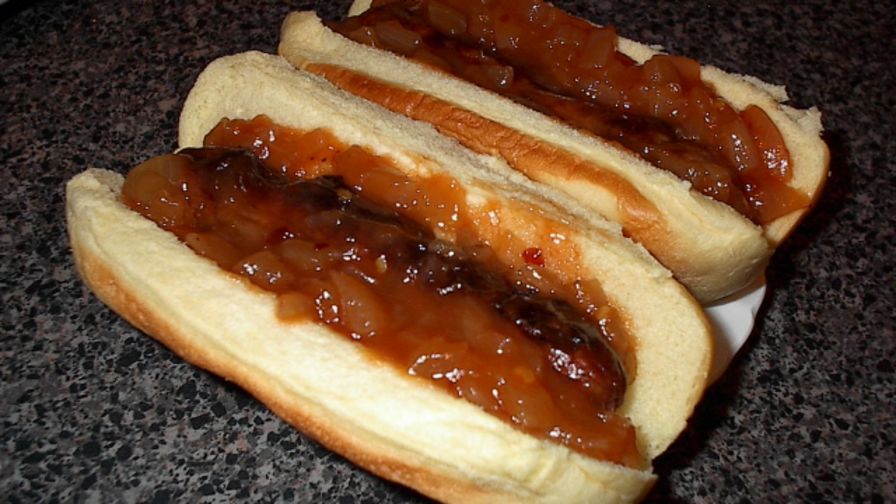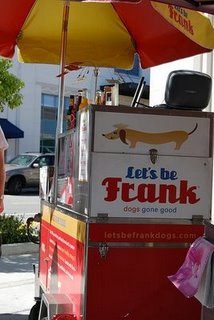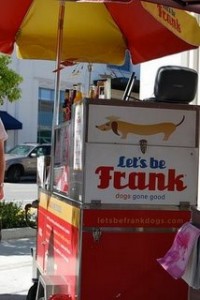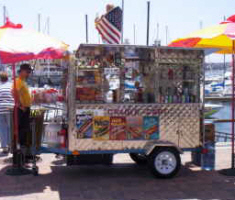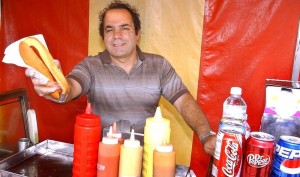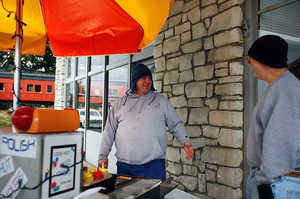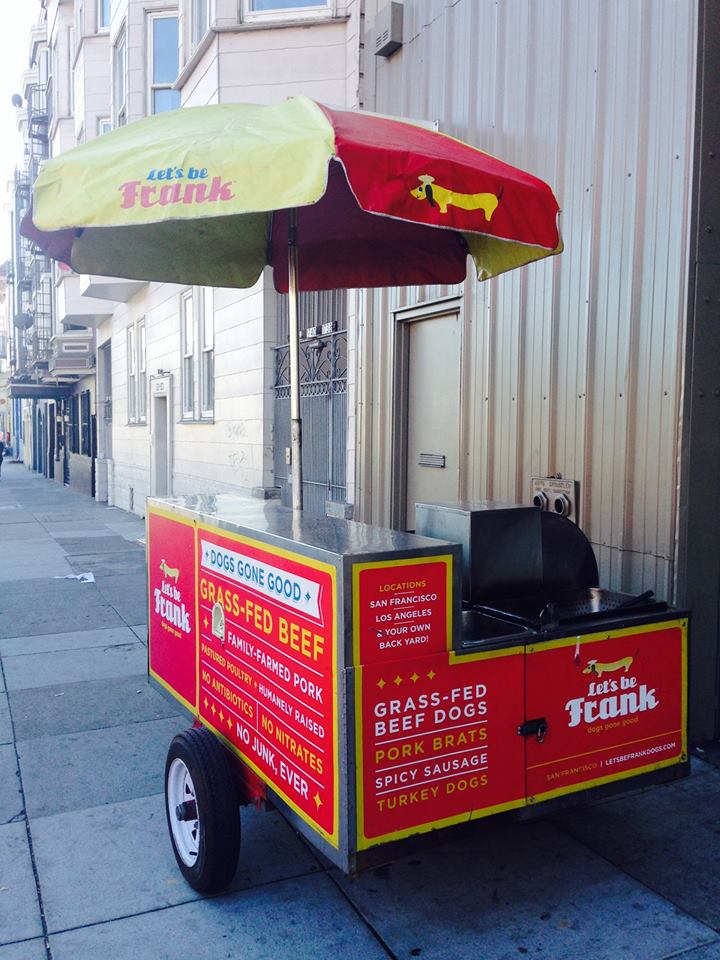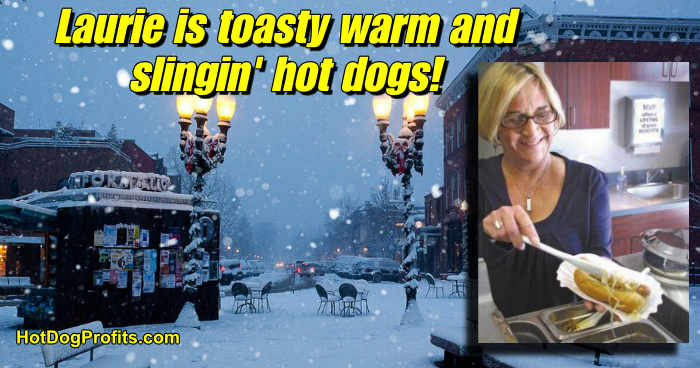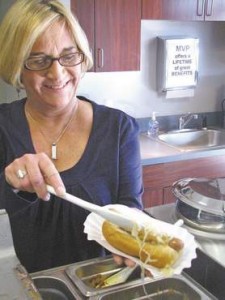Earl Traded Chicago Winters For Hotdogs in Paradise.
.
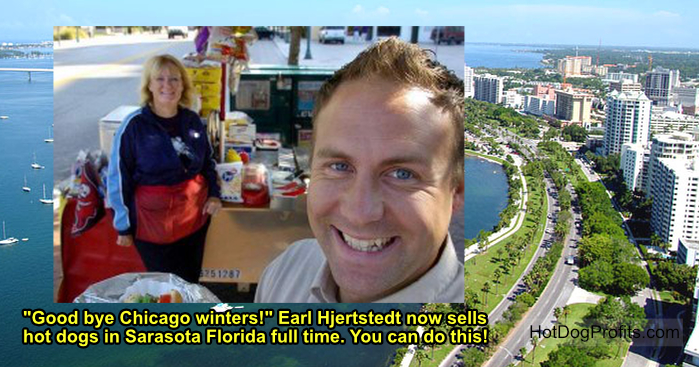
Note to Treasury Department: Here is one industry that will not be needing a bailout.
Hot dogs are holding their own.
Sales are up by 1.5 percent nationwide on prepared dogs and 4 percent on the cook-at-home variety from the grocery store, according to the National Hot Dog and Sausage Council, a division of the American Meat Institute. (P.S. to Treasury: Trade associations, too, seem to be flourishing.)
These are not exactly boom numbers, but given the circumstances — what is going on with home prices and new cars and retail sales — a positive hot dog index is as good as it gets in this economy.
Earl Hjertstedt Jr., who has been in the dog business in Sarasota for two years this month, has a theory about why hot dogs are doing so well, and it’s not just because they are cheap, though that helps. Cheap, of course, is relative. A Chicago dog all the way will cost you $3.50 at his Tasty Take-Out cart on Main Street, just across from the Herald-Tribune. Add chips and a soda, as most people do, and it’s five bucks for lunch at the cart, roughly the cost of any number of drive-in value combos.
But hot dogs, explains Earl Jr., who is 28, are “heritage.”
“You look back at old photographs from the ’20s or ’30s of any city and there’s always a hot dog stand. Times get tough, people go to what’s familiar.”
Earl Sr. introduced his son to hot dogs 25 years ago and Earl Jr. swears he still remembers the experience. “It was at a place called Portillo’s in Chicago, and I can remember what the counter looked like, and what the bun was like, and I can remember the bright green relish that was like, ‘Whoa.’”
The remarkable color of the relish is part of what identifies the Hjertstedt special as an honest-to-goodness Chicago dog, as does the thick pile of other garnishes that top it all off: diced onions and tomatoes, mustard, a spear of dill pickle, chopped hot peppers if you want ’em, and finally, a dash of celery salt.
“In Chicago, it’s called dragging the dog through the garden,” says Earl Jr. “A dog with everything you can think of. Except ketchup. Typically, the Chicago dog does not have ketchup.”
Tomato sauce of any kind would make it a Michigan dog, a variety most often associated with beanless chili and bright orange cheese.
The classic New York hot dog eschews red ingredients altogether, as served up with mustard and sauerkraut for $2 around the corner at the Sabrett stand in front of the Sarasota main post office.
There’s even a classic Los Angeles dog, the Hoffy all-beef weiner as served since 1939 at Pink’s on Melrose and La Brea avenues. This being California, the Pink’s dog is longer and thinner than the chubby sausages Easterners are used to.
Unlike the New York or Chicago dogs, the L.A. version is typically skinless. When you bite in, there is none of the snap you get from the stiff casing on the Sabrett’s weiner, or the all-beef Vienna frank that Chicago prefers.
This, says Earl Jr., is the real challenge of hot dog marketing in a place like Sarasota, where everybody is from somewhere else and one man’s hot dog is another’s abomination on a bun.
Sarasota does not have its own signature hot dog, unless it’s with mayonnaise, a combination that none of the Hjertstedts had seen before they came here from the Chicago area in 2001.
“Mayonnaise — what’s that all about?” wonders Earl Jr., who endured another five winters up north before joining his parents in Sarasota.
He had been a road surveyor since high school. “In the winter, you’re looking for a curb and you have to chisel through the ice to find it,” Earl Jr. remembers. “Finally, I said, ‘Screw it.’”
He had a friend with a couple of hot dog carts in Chicago, which is how he got the idea, and from the beginning he had in mind staking out the Chicago dog niche.
The New Yorkers tend toward Tracy Johnson at Sabrett’s.
“There’s a guy who works across the street at GTE, I can hear his New York accent coming,” says Johnson. “Sauerkraut and the brown mustard. I have it ready.”
Tracy, 36, was a restaurant waitress in Sarasota for 22 years until 2007, when the last place she worked abruptly shut its doors. This is only her second week in the hot dog game, at the post office location pioneered more than 10 years ago by Sarasota’s dean of the dog, Edwin K. Wisbrun, now retired.
Tracy is a no-nonsense mustard girl. Her husband, Robert Lawson, who has spent all but a few of his 46 years in Sarasota, prefers his dogs slathered with mayo.
“To each his own,” Tracy has learned. “That’s what’s special about hot dogs.
– Attribution Sarasota Herald Tribune
